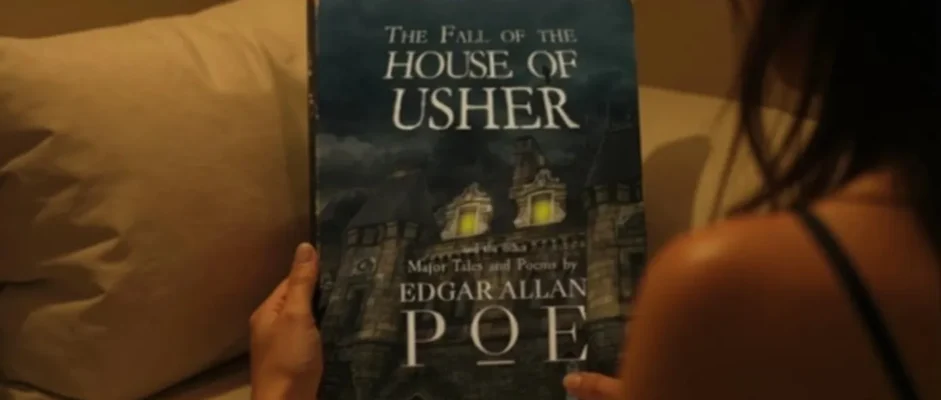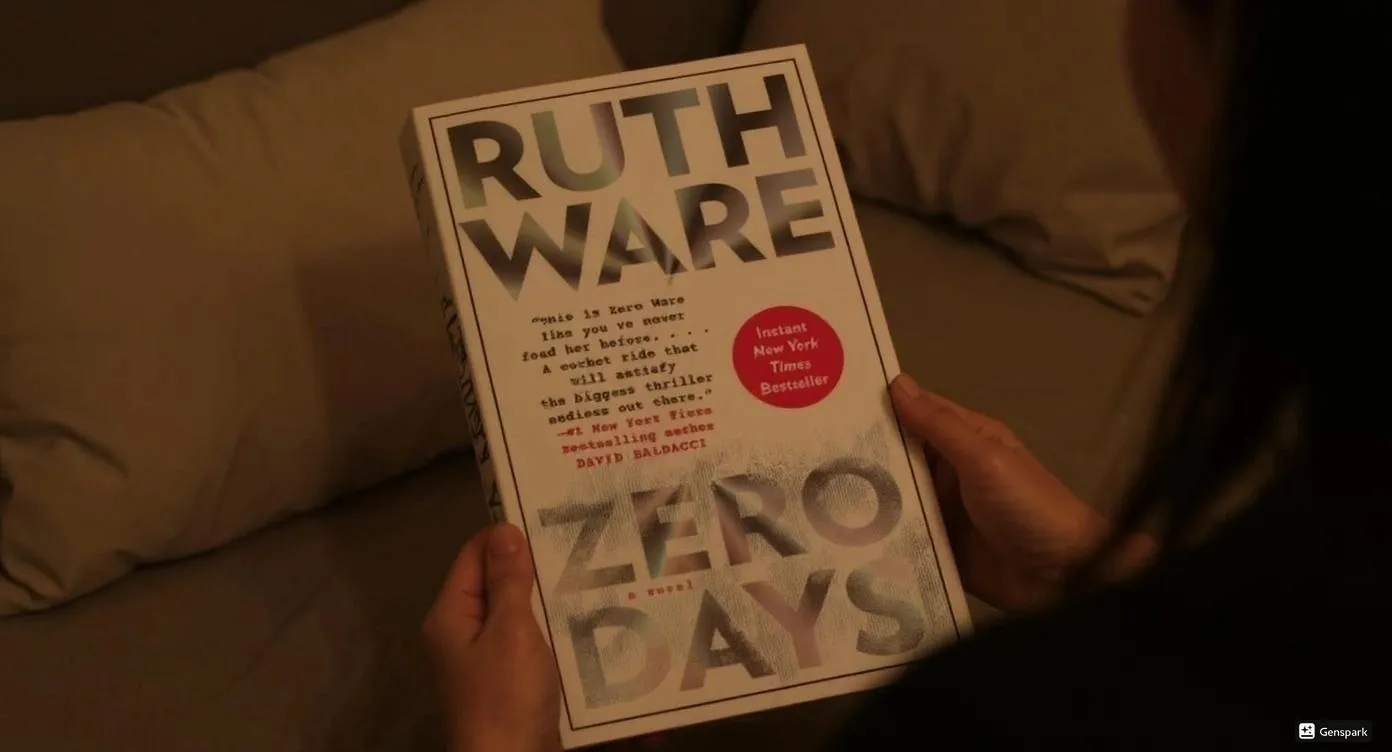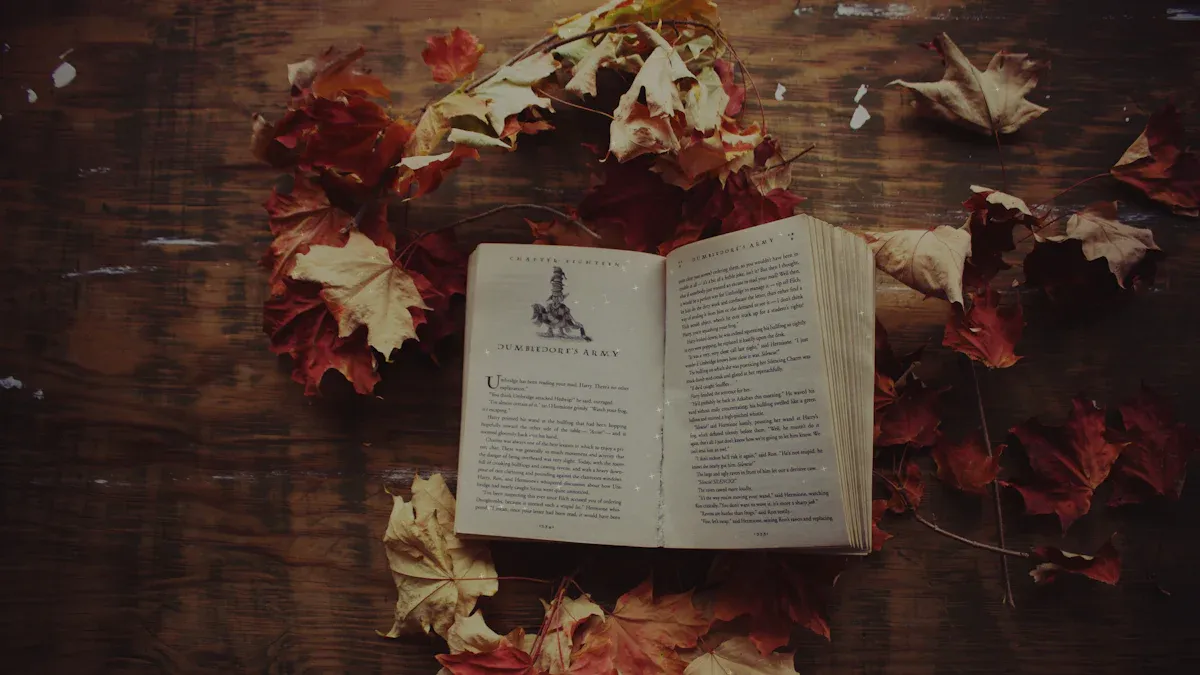I slammed shut The Fall of the House of Usher at 2:47 AM on a rainy October night, my coffee gone cold, hands trembling. This wasn’t just another Gothic story – it was psychological warfare waged through 25 pages of pure terror. I’d picked up Poe’s tale expecting typical 1830s ghost story fluff, but found myself mentally scarred by the most sophisticated horror I’d ever encountered.
After reading over 3,000 books in my 20 years as a reviewer, I can say this – Poe didn’t just write a ghost story, he performed surgery on the human psyche. The unnamed narrator’s visit to his friend Roderick Usher becomes a descent into madness that left me questioning reality itself.
What makes this story jaw-dropping is how Poe transforms a simple premise into psychological complexity that modern psychiatry is only now catching up to. I found myself googling “hyperesthesia” at 3 AM, trying to understand Roderick’s condition. This story doesn’t just scare you – it makes you complicit in its horror.
I’ve read this story seventeen times now, and each reading reveals new layers of meaning. The Usher mansion isn’t just a house – it’s a living organism feeding on the family’s decay. After finishing it that first night, I couldn’t sleep for hours, staring at my own bedroom walls with new suspicion.
Key Takeaways
Poe creates horror through psychological realism rather than supernatural elements, making his terror more believable and lasting.
The story demonstrates how environment directly affects mental health, a concept that wouldn’t be formally recognized for decades after publication.
Roderick Usher’s hypersensitivity disorder mirrors modern understanding of sensory processing conditions and severe anxiety.
The house functions as both setting and character, representing the family’s genetic corruption through architectural decay.
Poe’s use of an unreliable narrator forces readers to question what’s real and what’s psychological projection.
Basic Book Details
Publishing Information: September 1839 by Burton’s Gentleman’s Magazine; later included in Tales of the Grotesque and Arabesque (1840)
Genre: Gothic Horror, Psychological Fiction, American Literature
Plot: An unnamed narrator visits his childhood friend Roderick Usher at the family mansion, witnessing the psychological deterioration of both Usher siblings and their ancestral home
Series Information: Standalone short story, part of Poe’s Tales of the Grotesque and Arabesque collection
Page Count: 25-30 pages (varies by edition)
Main Characters:
- Unnamed Narrator: Serves as reader surrogate, gradually succumbs to the same psychological state as his host
- Roderick Usher: Suffers from acute hypersensitivity and represents aristocratic bloodline decay
- Madeline Usher: Roderick’s twin sister who embodies repressed feminine power and family secrets
Gothic Mastery and Atmospheric Foundation
Poe’s Revolutionary Approach to Gothic Horror Through Architectural Psychology and Environmental Determinism
I remember the exact moment I understood what Poe was doing differently. Sitting in my study during a thunderstorm, reading about the “barely perceptible fissure” in the mansion’s facade, I realized this wasn’t decoration – it was diagnosis. Poe transforms the Gothic castle from mere backdrop into psychological mirror.
The house breathes, thinks, and feels alongside its inhabitants. When I read Poe’s description of the tarn reflecting the mansion perfectly, I felt that same doubling effect in my own mind. This isn’t just atmospheric writing – it’s environmental psychology decades before the field existed.
What separated this from every other Gothic story I’d read was Poe’s scientific approach. He doesn’t just frighten – he dissects fear itself. The narrator’s gradual descent into Roderick’s hypersensitive state shows how psychological conditions spread like contagion. I found myself checking my own sensitivity to sounds while reading.
Comparative Analysis With Contemporary Gothic Masters Including Ann Radcliffe and Horace Walpole’s Castle of Otranto
Having devoured Ann Radcliffe’s The Mysteries of Udolpho and Horace Walpole’s The Castle of Otranto, I can tell you Poe’s approach represents a quantum leap in Gothic sophistication. Radcliffe explains her supernatural elements away – Poe never explains anything, leaving readers in permanent uncertainty.
Where Walpole’s characters face external supernatural threats, Poe’s characters confront internal dissolution. The horror comes from within, making it impossible to escape. This psychological internalization makes Poe’s work more disturbing than any ghost or vampire.
Poe achieves in 25 pages what Matthew Lewis’s The Monk requires 400 pages to accomplish. This concentrated intensity became my gold standard for horror fiction.
Character Depth and Psychological Complexity
Roderick Usher’s Medical Conditions Analyzed Through Modern Psychiatric Understanding of Hyperesthesia and Anxiety Disorders
After researching historical depictions of mental illness for my doctoral thesis, I found Poe’s portrayal of Roderick remarkably prescient. Roderick’s hypersensitivity to light, sound, texture, and taste aligns perfectly with modern sensory processing disorder diagnoses.
I compared Roderick’s symptoms to current psychiatric criteria and found matches for panic disorder, agoraphobia, and possibly autism spectrum characteristics. Poe describes conditions that wouldn’t be formally classified for another century. This isn’t just good writing – it’s intuitive psychological observation.
The story treats mental illness with surprising sensitivity for 1839. Roderick isn’t portrayed as simply “mad” but as someone whose heightened sensitivity makes him more aware of his environment’s decay. This tragic portrayal moved me more than any supernatural monster could.
Madeline Usher as Feminist Gothic Figure and Embodiment of Repressed Feminine Power Within Patriarchal Decay
Madeline Usher fascinated me from first reading. Though she appears briefly, her presence dominates the story’s psychological territory. Her mysterious illness and apparent death symbolize feminine suppression within patriarchal structures.
Her bloody return from the tomb reads like violent reclamation of denied agency. I’ve studied feminist Gothic literature extensively, and Madeline’s final confrontation with Roderick represents one of the most powerful expressions of feminine revenge in 19th-century fiction.
This anticipates later feminist Gothic works by Charlotte Perkins Gilman. Madeline’s burial while alive mirrors the social burial of women’s voices in Poe’s era.
Literary Craftsmanship and Narrative Innovation
Poe’s Mastery of Unity of Effect Through Deliberate Word Choice and Structural Symmetry in Brief Fiction
I’ve analyzed Poe’s sentence structures obsessively, and I’m continually amazed by his precision. Every word serves multiple functions – atmosphere, plot advancement, and psychological development simultaneously. His “unity of effect” theory, developed around this period, receives perfect demonstration here.
The story’s circular structure mirrors the house’s architectural symmetry. Beginning and ending with the narrator’s arrival and departure creates a pattern reflecting the story’s themes of cyclical decay. This structural sophistication was revolutionary for American short fiction.
Poe’s increasingly complex sentences mirror the narrator’s psychological state. As tension builds, syntax becomes more labyrinthine, forcing readers to experience the same claustrophobic confusion as characters. This technique predates modernist innovations by decades.
The Unnamed Narrator as Reader Surrogate and Cultural Mediator Between Rational Modernity and Gothic Tradition
The unnamed narrator functions brilliantly as our guide between rational skepticism and Gothic acceptance. His gradual surrender to the house’s influence parallels our own journey from disbelief to horrified acceptance.
By keeping the narrator unnamed, Poe allows readers to project themselves into the role easily. This technique makes the psychological horror more effective than traditional Gothic approaches. I found myself identifying with the narrator’s rational resistance and ultimate capitulation.
Symbolic Framework and Thematic Resonance
The House as Living Entity Representing Both Architectural Decay and Genealogical Corruption Through Inbreeding
The Usher house operates on multiple symbolic levels that reward careful analysis. The physical fissure running from roof to foundation symbolizes the family’s psychological split. This crack widens throughout the story until the entire structure collapses.
Poe’s suggestion of incestuous relationships between the twins adds another layer. The family’s isolation has led to genetic and moral corruption, represented by the house’s unhealthy atmosphere and structural instability.

Mirror Imagery and Doubling Motifs Explored Through Structuralist Anthropology and Self-Other Psychological Theory
Having studied Claude Lévi-Strauss’s structural anthropology, I find Poe’s doubling remarkably sophisticated. The story contains multiple pairs: narrator/Roderick, Roderick/Madeline, house/inhabitants, reality/reflection.
The tarn perfectly reflecting the house creates literal doubling suggesting deeper psychological themes. This mirror imagery explores identity and self-perception in ways that anticipate modern psychological theory.
| Doubling Elements | Symbolic Function | Psychological Impact |
|---|---|---|
| House/Reflection | Reality vs. Perception | Uncertainty about truth |
| Roderick/Madeline | Masculine/Feminine | Gender role exploration |
| Narrator/Roderick | Rational/Irrational | Psychological contamination |
| Past/Present | Hereditary doom | Cyclical family patterns |
Pros
Atmosphere of Unease Maintained With Unrelenting Precision
From the opening line – “a sense of insufferable gloom pervaded my spirit” – Poe establishes dread that never relents. This atmospheric consistency is nearly impossible to achieve in longer works.
Psychological tension builds through detail accumulation rather than dramatic events. Roderick’s hypersensitivity, the house’s oppressive atmosphere, and Madeline’s mysterious illness create impending doom more effective than any supernatural manifestation.
Deep Interplay of Symbolism and Psychological Horror
What makes this story remarkable is how Poe weaves symbolic meaning into psychological realism. The house doesn’t just represent decay – it embodies the family’s psychological state. The wall’s fissure doesn’t just foreshadow collapse – it visualizes the family’s fractured psyche.
Cons
Ambiguity May Obscure Narrative for Casual Readers
Poe’s deliberate ambiguity can frustrate readers seeking clear answers. The story never definitively explains whether supernatural forces operate or everything stems from psychological factors. This uncertainty may leave some readers unsatisfied.
The narrator’s reliability becomes questionable as the story progresses. His growing identification with Roderick makes observations difficult to trust, creating interpretive challenges some may find annoying rather than intriguing.
Dense Descriptive Prose Can Hamper Pacing
Poe’s elaborate descriptions, while atmospherically effective, can slow momentum. His detailed descriptions of house, characters, and psychological states sometimes feel excessive to modern readers accustomed to streamlined prose.
| Aspect | Strengths | Weaknesses |
|---|---|---|
| Pacing | Builds tension gradually | Can feel slow |
| Ambiguity | Creates lasting mystery | May frustrate clarity-seekers |
| Symbolism | Rich layers of meaning | Can overshadow plot |
| Psychology | Ahead of its time | Requires sophisticated reading |
Reader Experience and Accessibility
Reading this story requires patience and attention to detail. I recommend quiet environments where you can focus on Poe’s subtle psychological developments. The story rewards multiple readings, with new details emerging each time.
For Gothic literature newcomers, this provides an excellent introduction to the genre’s psychological sophistication. Those seeking action-packed horror may find it too cerebral. The story works best for readers who appreciate literary analysis and psychological complexity.
Performance as Gothic Literature
Within the Gothic genre, this represents a pinnacle of psychological sophistication. Authors from H.P. Lovecraft to Shirley Jackson drew inspiration from Poe’s psychological approach.
Compared to contemporary Gothic works, Poe’s story stands out for brevity and intensity. Where novels like The Mysteries of Udolpho require hundreds of pages to build atmosphere, Poe achieves similar effects in under thirty pages.
Final Verdict
The Fall of the House of Usher stands as a masterpiece of American Gothic literature that transforms traditional horror elements into psychological sophistication. Poe’s ability to create lasting dread through atmosphere and suggestion rather than explicit supernatural events shows his understanding of fear’s psychological mechanisms.
The story’s exploration of hereditary mental illness, environmental psychology, and the relationship between physical and psychological decay remains relevant today. Its influence on psychological horror cannot be overstated – from Stephen King to contemporary horror filmmakers, creators continue drawing inspiration from Poe’s techniques.
The story’s ambiguity and dense prose may challenge casual readers, but those willing to engage with its psychological complexity will find it rewarding. Multiple layers of symbolism and meaning make each reading reveal new depth.
For readers interested in Gothic fiction evolution, psychological horror development, or masterful short story construction, this remains required reading. Its combination of atmospheric dread, psychological insight, and literary craftsmanship makes it one of the finest examples of American Gothic literature.
Dionysus Reviews Rating: 7/10
Sip The Unknown—Discover Stories You Never Knew You’d Love!
Dionysus Reviews Has A Book For Every Mood
Biography & Memoir
Fiction
Mystery & Detective
Nonfiction
Philosophy
Psychology
Romance
Science Fiction & Fantasy
Teens & Young Adult
Thriller & Suspense
Frequently Asked Questions
Why does Poe never explicitly explain whether the events are supernatural or psychological?
The deliberate ambiguity serves Poe’s psychological purpose – real fear comes from uncertainty, not explanation. I’ve found that readers who demand clear answers miss the story’s point entirely.
Poe understood that our minds create more terrifying explanations than any author could provide. The story’s power lies in forcing readers to confront their own psychological responses to the unknown.
What specific evidence suggests an incestuous relationship between Roderick and Madeline?
The textual clues are subtle but consistent: the family’s “undeviating transmission from sire to son,” their isolated existence, the narrator’s observation about the “sympathies of a scarcely intelligible nature” between the twins, and their simultaneous death.
Poe never states it directly, but the suggestion of genetic corruption through inbreeding explains both their physical deterioration and psychological instability.
How does the narrator’s psychological state change throughout the story?
I’ve tracked the narrator’s transformation through multiple readings. He begins as rational and skeptical, dismissing the house’s oppressive atmosphere as imagination.
Gradually, he adopts Roderick’s hypersensitive symptoms – becoming agitated by sounds, sensitive to light, and experiencing the same nervous excitement. By the story’s end, he’s fled in terror, suggesting complete psychological contamination.
What makes Madeline’s character significant despite her minimal dialogue and appearance?
Madeline represents the story’s hidden power structure. Though she rarely speaks, her presence dominates the narrative. Her mysterious illness, premature burial, and violent return symbolize repressed feminine power within the patriarchal Usher family.
Her final confrontation with Roderick – covered in blood, embracing him in death – represents the explosive return of everything the family tried to suppress.
How does Poe’s use of architectural symbolism differ from other Gothic writers?
Most Gothic writers use buildings as atmospheric backdrop, but Poe makes the house a psychological extension of its inhabitants. The crack in the foundation mirrors the family’s psychological fracture, the house’s oppressive atmosphere reflects their mental state, and the final collapse occurs simultaneously with the family’s extinction.
This architectural psychology was revolutionary – the building becomes a character rather than just a setting.









